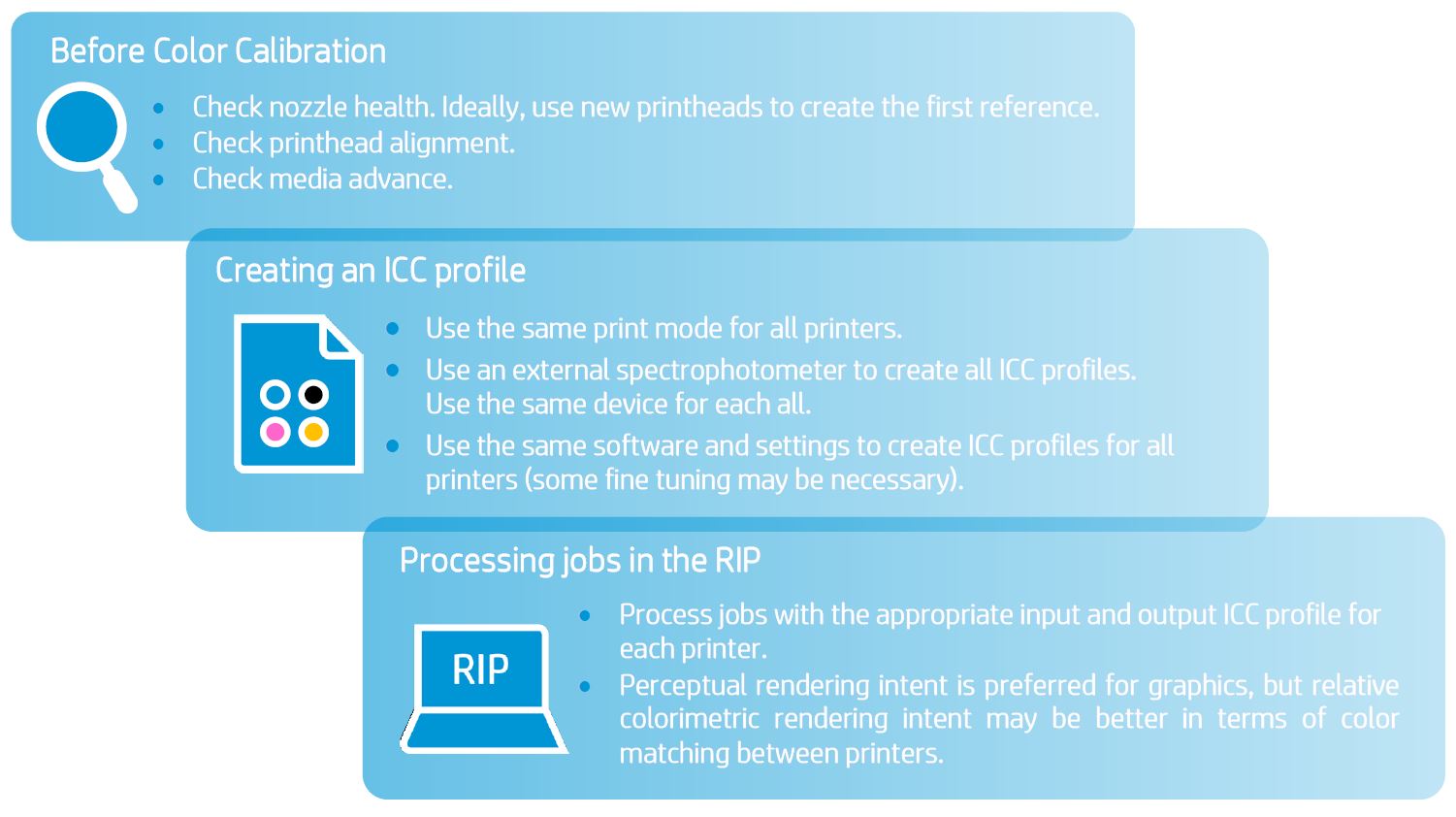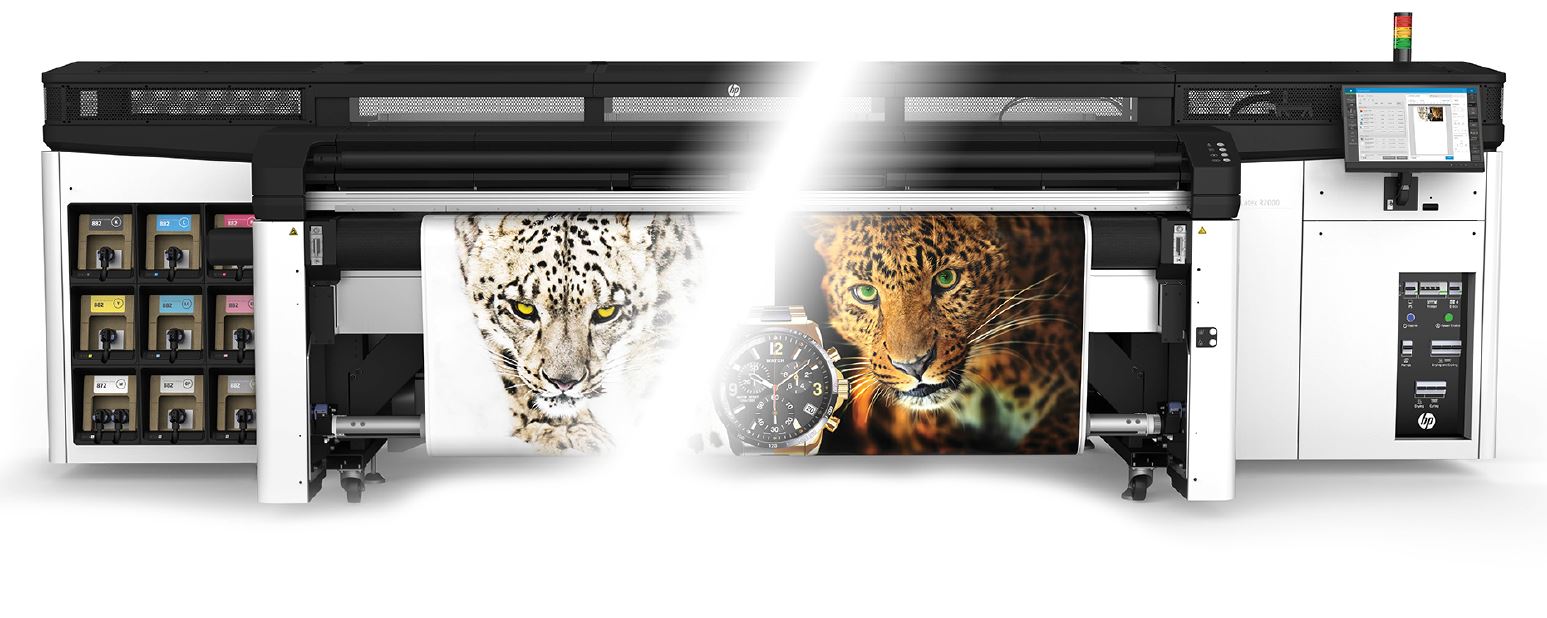
Good practices to ensure correct color matching.
1. Matching the color between printers
When having a fleet of different HP Latex R series printers, one of the most common goals is to have the best color matching between printers. This enables the user to print large jobs with different printers or reprint any job in any available printer of the fleet.

* Color matching within a certain color accuracy threshold, for the same substrate and using equivalent print modes between printers. Other image quality attributes may be different between different products (i.e. grain, etc.)
Follow the next recommendations to learn how to manage your fleet for the best matching between all printers.
2. How to manage a fleet of printers (same product)
When managing a fleet of printers, one printer must be the “master” or reference printer to the others. After preparing the reference printer, resources can be shared with the rest of the fleet printers (secondary printers). Then, the secondary printers are calibrated to obtain the best matching between both printers.
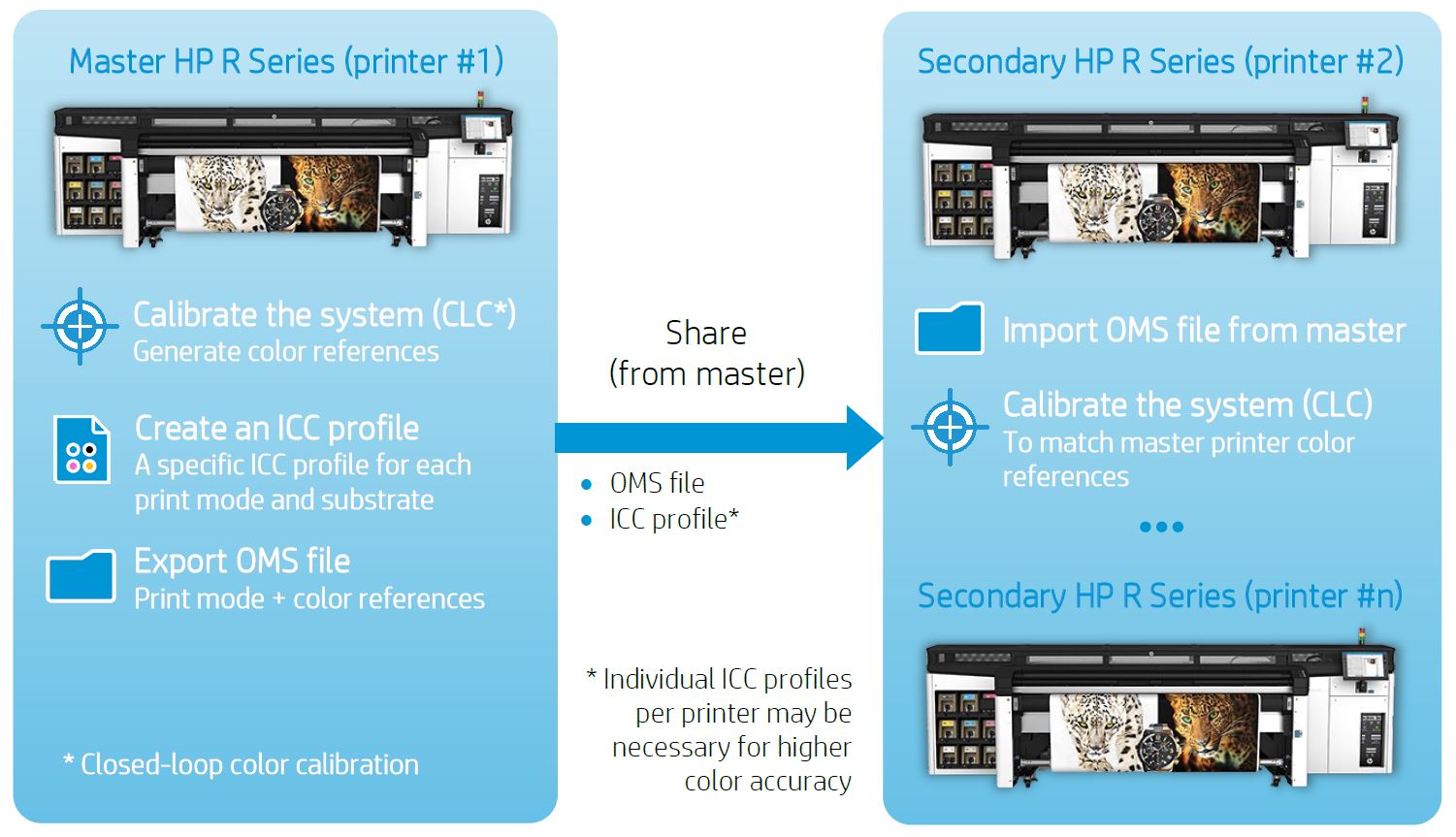
For a given substrate, prepare the master printer as follows:
NOTE: Before starting the process, it is necessary to ensure that the printer is printing with good image quality. Check printhead nozzle health, printhead alignment, substrate advance, etc.
2.1 Prepare the master printer
2.1.1 STEP 1. Calibrate the color of the master printer (CLC)
When the Color Calibration functionality of the printer is used for the first time, the printer sets a color reference. In other words, the color calibration reference is like taking a picture of the printer status. Next, this color reference can be exported to the other printers of your fleet, and those can be calibrated using the same reference. This step is the most important, so it is the baseline for all your fleet management for the best color matching.
In the Internal Print Server, go to Substrate library, choose the substrate wanted, and press Calibrate or Print color reference (depending on whether the reference has been set previously).
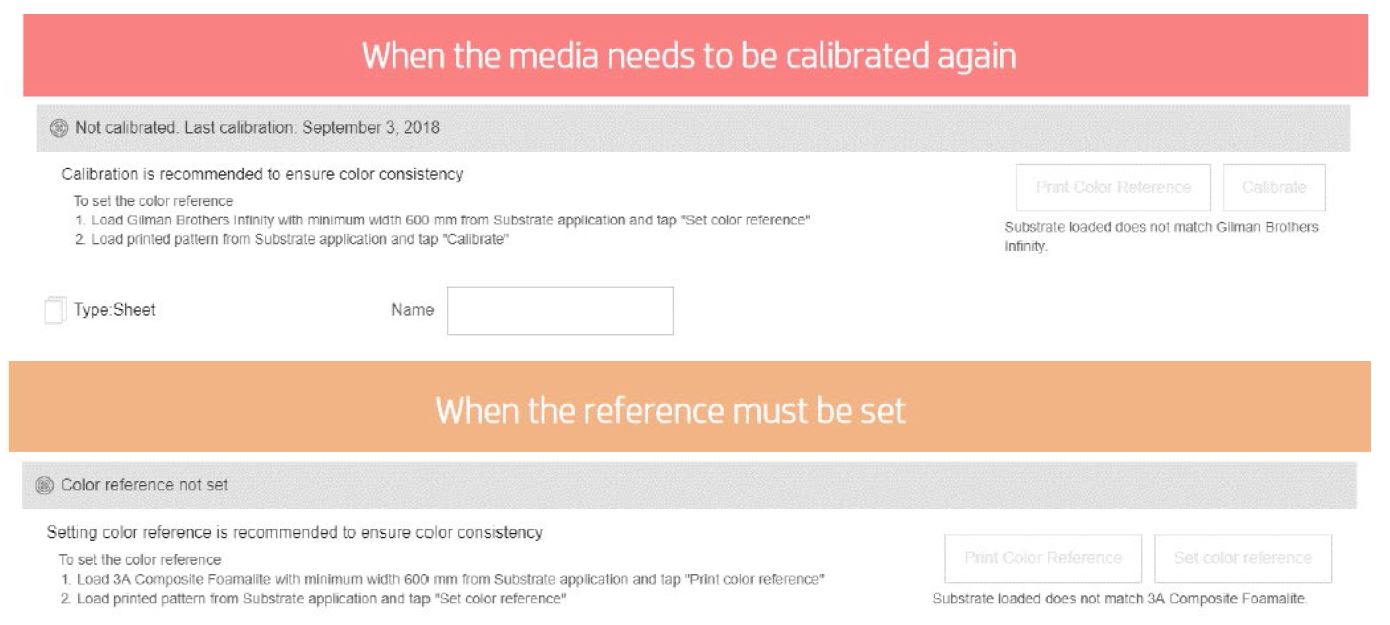
Once the reference has been set, the baseline for all your fleet management has been set.
2.1.2 STEP 2. Create an ICC profile for the master printer
Once the printer has been calibrated, select the print mode you want to use, adjust the settings to obtain good image quality (if necessary), and create an ICC profile for that specific print mode. This ICC profile will be used to color manage jobs for your fleet of printers.
2.1.3 STEP 3. Export OMS file from master printer
Export the .oms file from the master printer that will contain color references and print mode information.
a) From the Internal Print Server
Go to Substrate Library, choose the substrate wanted, and press Export substrate.
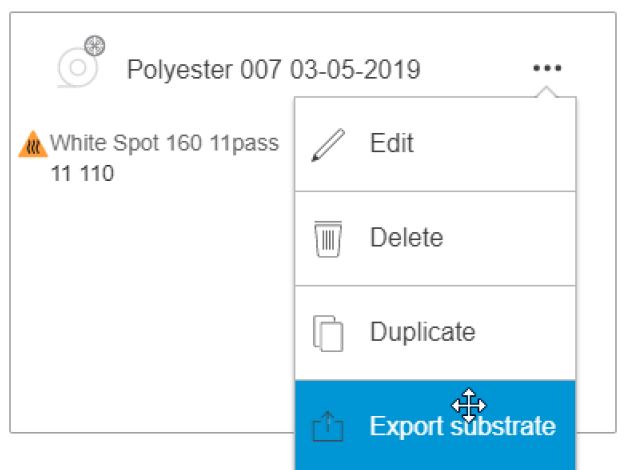
Follow the instructions to export the file. This oms file is the one that is going to be imported by the secondary printers.
b) From the Print OS configuration center
Go to the printer and create the substrate package for the master printer.

2.2 Configure your secondary printer to match the master printer
2.2.1 STEP 1. Import OMS file from master
a) From the Internal Print Server
Go to Substrate Library, choose the substrate wanted, and press Import Substrate.
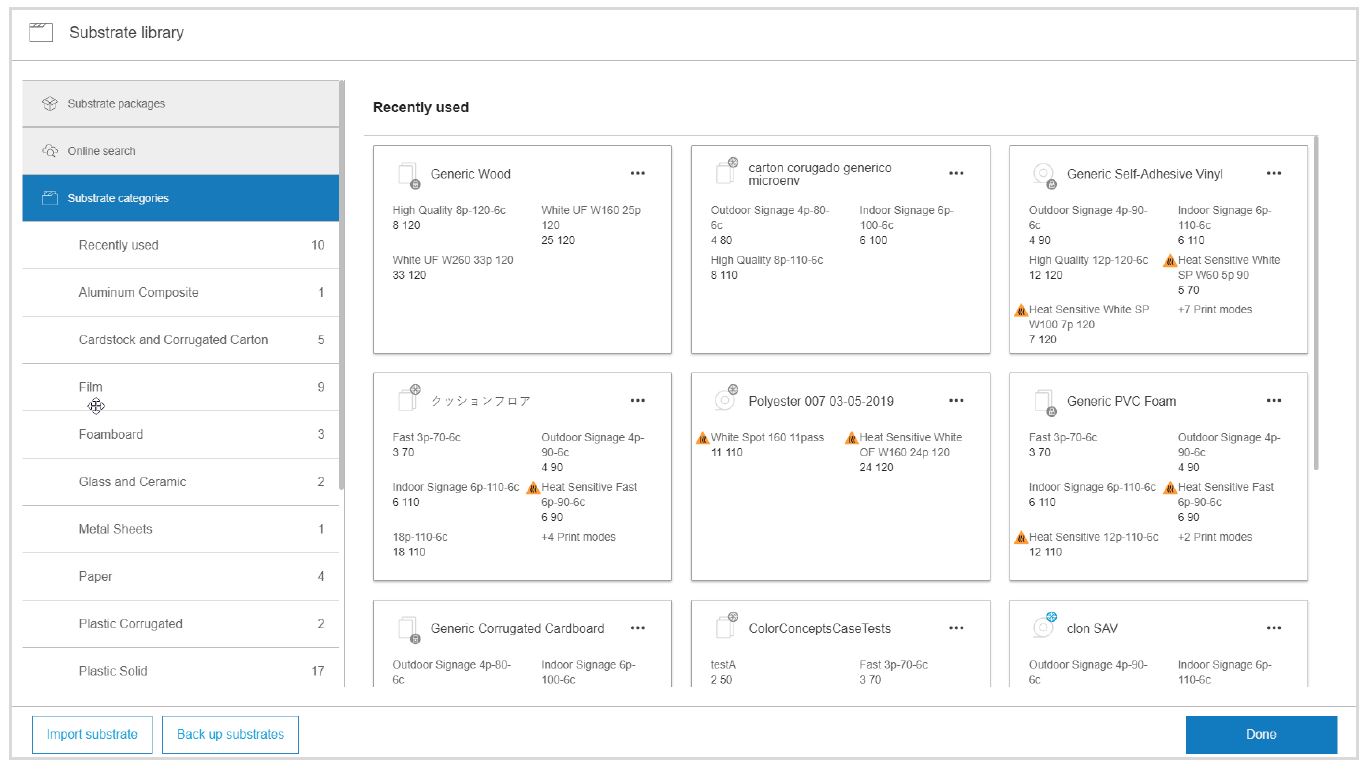
Follow the instructions to install the file on the printer.
b) From the Print OS configuration center
Go to the printer and deploy the Master Substrate package.

2.2.2 STEP 2. Calibrate the system (CLC)
In this step, the color calibration uses the color references of the master printer for the best color matching between printers.
In the Internal Print Server, go to Substrate Library, choose the substrate wanted, and press Calibrate.

Once the color calibration is done, the process is completed.
This process is substrate and print mode dependent:
• Each substrate will have its own CLC references, which will be valid for any print mode used with this substrate.
• Each print mode for the given substrate will have its own ICC profile.
This means that steps 1 and 3 of the master printer preparation are done just once per substrate, as well as steps 1 and 2 of the secondary printer configuration. Once that CLC references had been shared from the master printer (export .oms) to the secondary printer (import .oms), this is valid for all print modes, and there is no need to repeat this process. However, each print mode will need its own dedicated ICC profile.
2.3 Example
A user has a Custom Foam Board and is using a 6p 6c 100% ink print mode. The process is as follows:
MASTER PRINTER:
• STEP 1: Calibrate the system -> Create a CLC reference for the Custom Foam Board substrate.
• STEP 2. Create an ICC profile ->For the 6p 6c 100% ink print mode using the Custom Foam Board substrate.
• STEP 3. Export OMS file -> Custom Foam Board OMS file.
SECONDARY PRINTER:
• STEP 1: Import OMS file -> Custom Foam Board OMS file.
• STEP 2. Calibrate the system -> Do a CLC using the Custom Foam Board substrate.
After the completion of these steps, the ICC profile for the 6p 6c100% can be used for both printers.
Now, if a new 4p 6c 90% print mode needs to be used, only a new ICC profile will be necessary for that print mode and can be shared for both printers. Is not necessary to repeat steps 1 & 3.
NOTE: As mentioned before, a common ICC profile per print mode can be used for all printers. However, a high level of color accuracy may be required for some applications. In this case it is recommended to create an individual ICC profile per printer and per print mode after completing step 2 in the secondary printer.
3. Tips for correct fleet management
Consider the following tips for best color matching for your fleet of printers:
